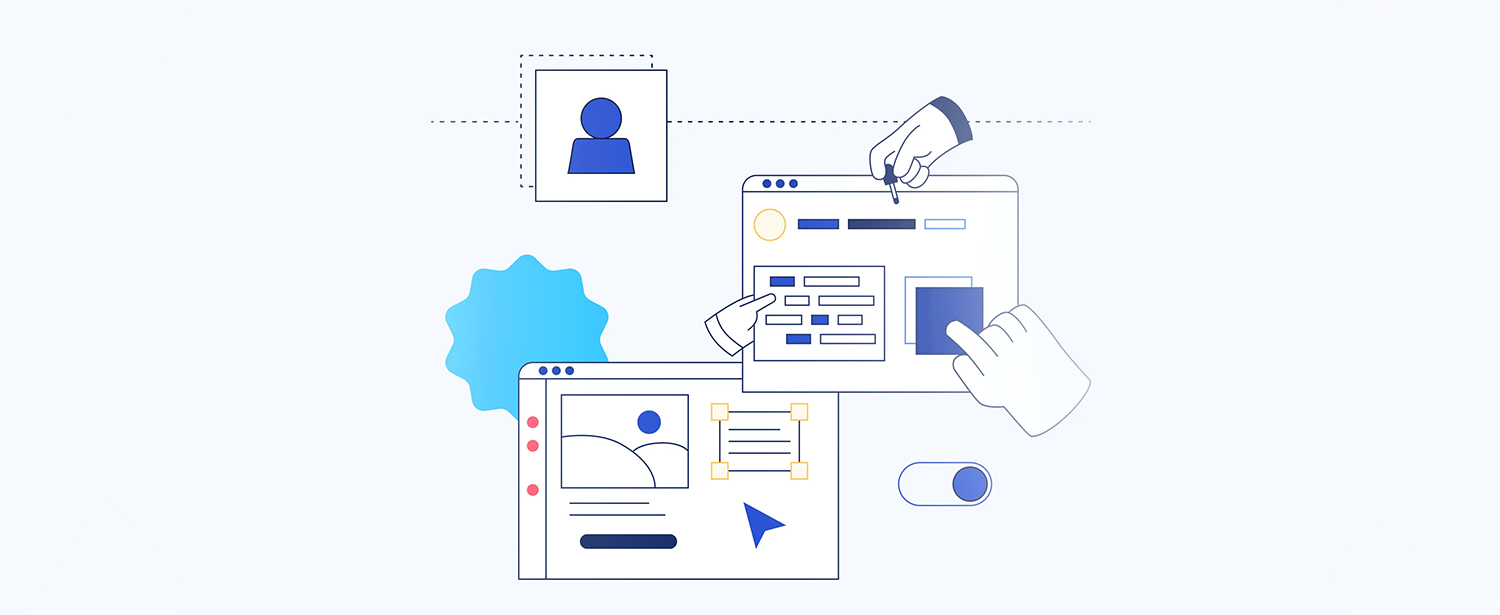Usability testing is essential to product development, ensuring that a product is functional, intuitive, and user-friendly. A well-designed product should allow users to navigate effortlessly, complete tasks efficiently, and experience minimal frustration. Without testing, businesses risk launching products that may be confusing, inefficient, or difficult to use, leading to lower engagement and increased abandonment rates.
By conducting usability tests, companies can identify pain points early, make necessary improvements, and create a seamless user experience. This proactive process not only enhances customer satisfaction but also reduces costly post-launch fixes.
In this blog, we will explore usability testing importance, how it differs from user testing, its crucial benefits, and how businesses can implement it effectively.
What is Usability?
Usability is the ease with which users can navigate and interact with a product, such as a website, mobile app, or software. It ensures that users can navigate a system effortlessly and complete tasks without difficulty.
Jakob Nielsen, a leading usability expert, outlines five essential components:
- Learnability: Users should be able to perform basic tasks quickly when they first use the product.
- Efficiency: Once familiar, users should complete tasks without delays.
- Memorability: Returning users should remember how to use the product, even after a gap.
- Errors: The product should minimize errors, and when mistakes occur, users should easily recover from them.
- Satisfaction: Users should find the product pleasant and easy to use.
A well-designed product with good usability enhances user satisfaction and encourages engagement, leading to long-term success.
What is Usability Testing?
Usability testing involves assessing a product by observing real users while they interact with it. This method helps identify usability issues, understand user behavior, and gather feedback to refine the design before launching the product. It provides valuable insights into whether users can complete tasks efficiently, where they face difficulties, and what improvements can enhance their experience.
The goal of this is to optimize a product for ease of use and functionality. Companies conduct usability tests to ensure their product aligns with user expectations, prevent frustration, and minimize post-launch modifications. This proactive approach leads to higher user satisfaction and reduces development costs associated with fixing flaws after release.
Benefits of Usability Testing
Improved User Experience
One of the most significant benefits is enhanced user satisfaction. When a product is intuitive and easy to use, users are more likely to engage with it and return for future interactions.
A seamless experience minimizes frustration, making users feel comfortable and confident while navigating the platform. A positive user experience also strengthens brand perception and customer loyalty, leading to long-term success.
Early Detection of Design Flaws
Identifying issues before launch helps companies avoid costly redesigns and negative feedback. Closer examination discloses navigation challenges, unclear instructions, and inefficient workflows that might frustrate users.
Moreover, fixing flaws before launch is much cheaper and faster than handling customer complaints, redesigns, or feature rollbacks after release. Addressing these issues during development is far more cost-effective than making changes after a product has been released. This proactive approach ensures that products meet user expectations from day one.
Higher Conversion Rates
A product with good utility naturally leads to higher conversion rates. Whether it’s an e-commerce website, mobile app, or SaaS platform, a smooth and intuitive experience encourages users to complete desired actions, such as making a purchase, signing up for a service, or filling out a form. When you solve obstacles, it helps businesses increase engagement and drive sales.
Competitive Advantage
In today’s competitive market, users have countless alternatives to choose from. Products that offer the smoothest experience stand out, attracting more users and retaining them for longer periods. By prioritizing tests, companies can gain a competitive edge, ensuring that their products not only meet but also exceed user expectations. A well-optimized product enhances customer trust and increases the likelihood of positive reviews and referrals.
What’s Involved in Usability Testing?
Here 5 essential steps of usability testing:
Defining Objectives and Test Scenarios
The first step in user experience evaluation is establishing clear objectives. Without well-defined goals, the process can become scattered, leading to unstructured insights and minimal improvements.
When setting usability testing goals, businesses should focus on specific interaction challenges they want to address. These could include understanding why users abandon a checkout process, determining whether navigation is intuitive, or measuring how quickly users complete key tasks.
A strong objective ensures that the test delivers meaningful insights. Instead of a vague goal like, “I want to observe how users interact with my website,” a better approach would be:
“I aim to determine the reasons behind checkout abandonment and decrease drop-offs by 20%.”
This allows teams to focus on solving real user experience issues that impact engagement.
Once objectives are set, test scenarios need to be defined. These are the specific tasks that users will complete during the evaluation. For instance, if the goal is to assess an e-commerce checkout process, a test scenario might be:
“Purchase a product from the website and complete the checkout process.”
Well-structured scenarios help ensure that the analysis generates valuable, actionable feedback.
Conducting the Tests
Why In-Person Usability Testing?
Conducting usability tests in a controlled environment allows researchers to observe user behavior in real time, capturing facial expressions, body language, and frustration points that may go unnoticed in remote testing. With direct interaction, facilitators can ask follow-up questions, clarify tasks, and ensure accurate feedback.
Moreover, in-person testing provides deeper insights, higher engagement, and a structured setting, making it ideal for refining digital products before launch. By bringing users into a dedicated testing space, companies can create a distraction-free environment for accurate and actionable results.
Analyzing Results and Identifying Usability Issues
After the tests are completed, the next step is analyzing the results to identify common issues. Businesses should categorize feedback into recurring themes, such as:
- Navigation issues: Users struggle to find important features.
- Confusing terminology: Labels and instructions are unclear.
- Task completion failures: Users are unable to complete essential actions.
- Performance issues: Slow load times or technical glitches affect utility.
For example, if users consistently struggle to find the checkout button, the insight should be framed as: “Users couldn’t locate the checkout button easily. Moving it to the top-right corner could improve accessibility and reduce drop-offs.” Structuring findings this way makes it easier for teams to translate them into actionable design improvements.
Implementing Changes Based on Findings
Once issues have been identified, the next step is implementing the necessary changes. Fixing every issue at once may not be feasible, so businesses should prioritize high-impact, low-effort fixes first.
Results should be communicated clearly to designers, developers, and stakeholders. The most effective way to present findings is by:
- Using screenshots and video recordings to highlight user pain points.
- Including direct user quotes to reinforce the severity of issues.
- Summarizing critical problems and recommended solutions concisely.
After making changes, businesses must measure their impact by tracking key performance indicators such as:
- Task completion rates: Are users completing tasks more easily after changes?
- Conversion rates: Have the improvements led to higher engagement or sales?
- User feedback: Do users report a better experience after updates?
This is not a one-time process. Continuous tests and iteration allow businesses to refine their products, adapt to evolving user needs, and ensure long-term success.
Conclusion
When it comes to usability testing, its importance cannot be overlooked in product development. It ensures that products are user-friendly, reducing frustration and improving the overall experience. By continuously reviewing and refining, businesses create products that meet user expectations, enhance satisfaction, and drive success. A well-tested product stands out, builds trust, and keeps users engaged.




